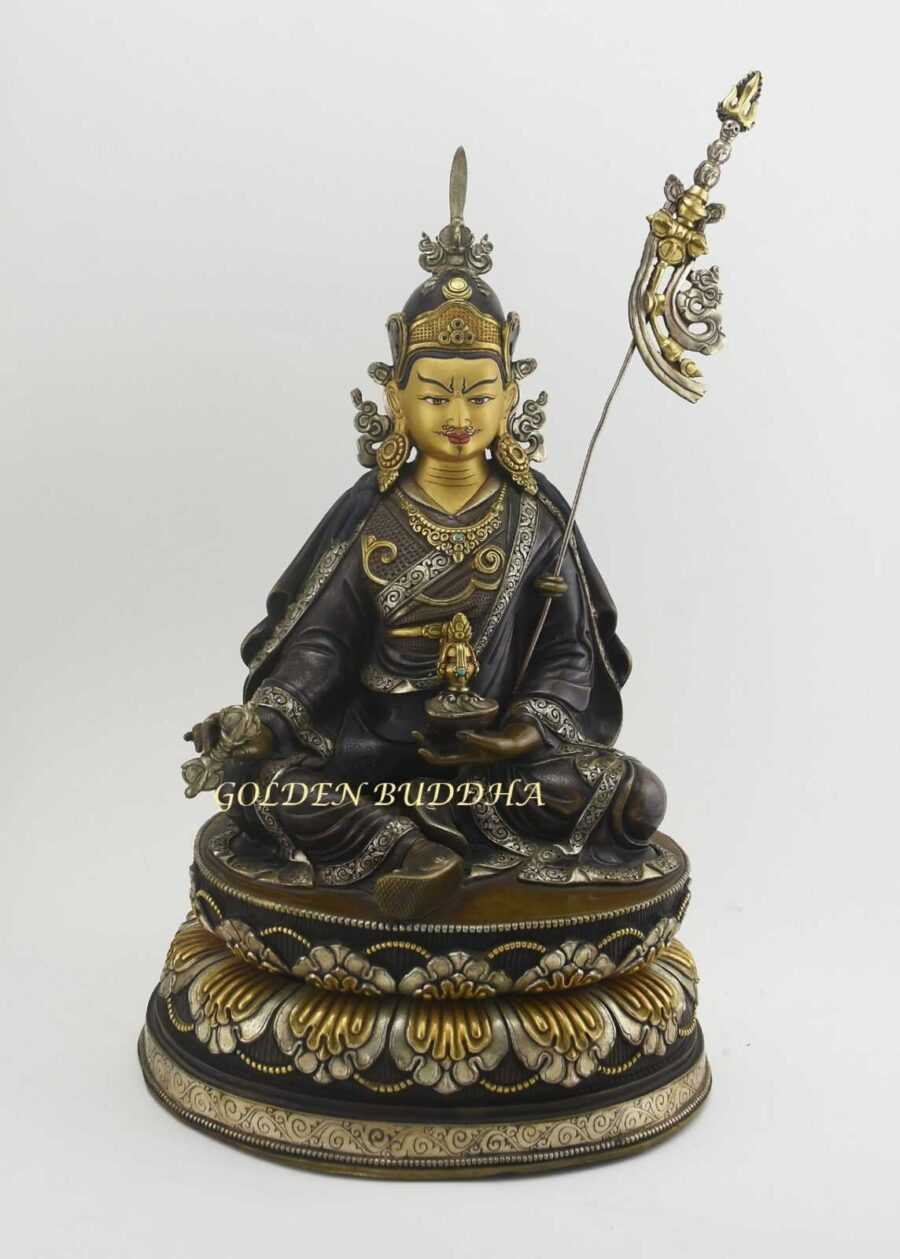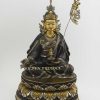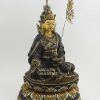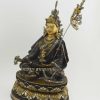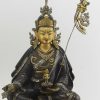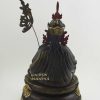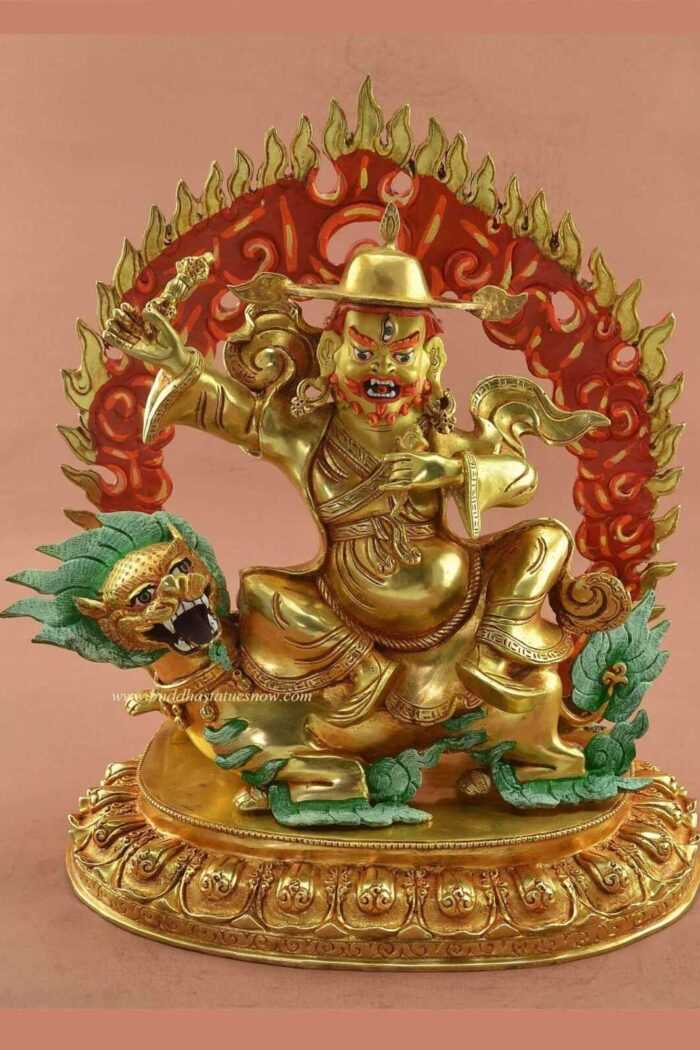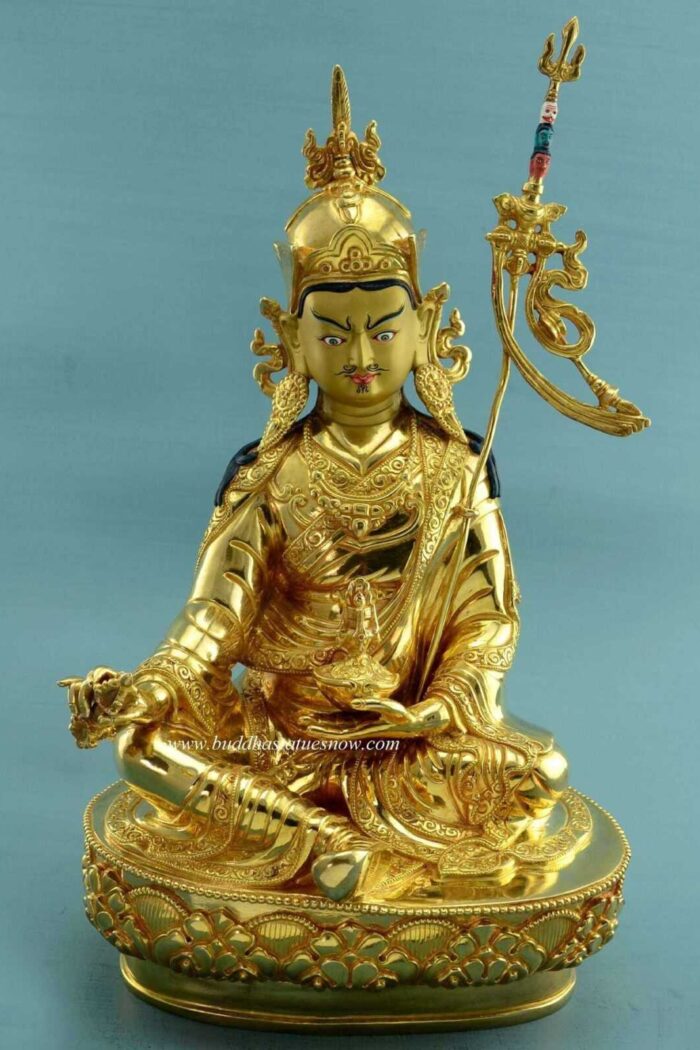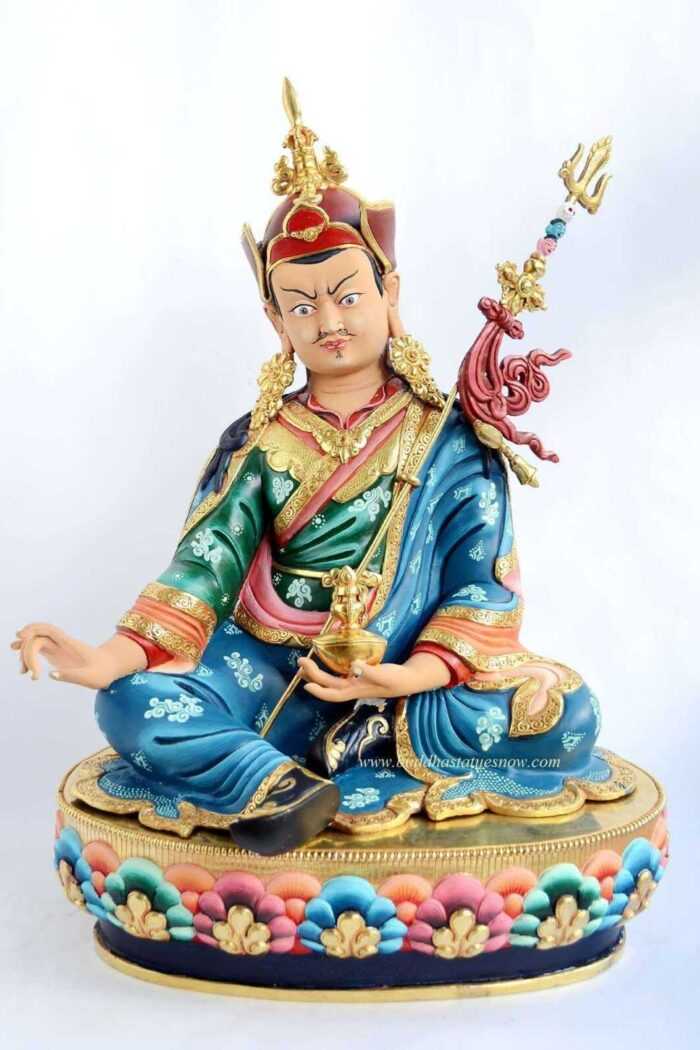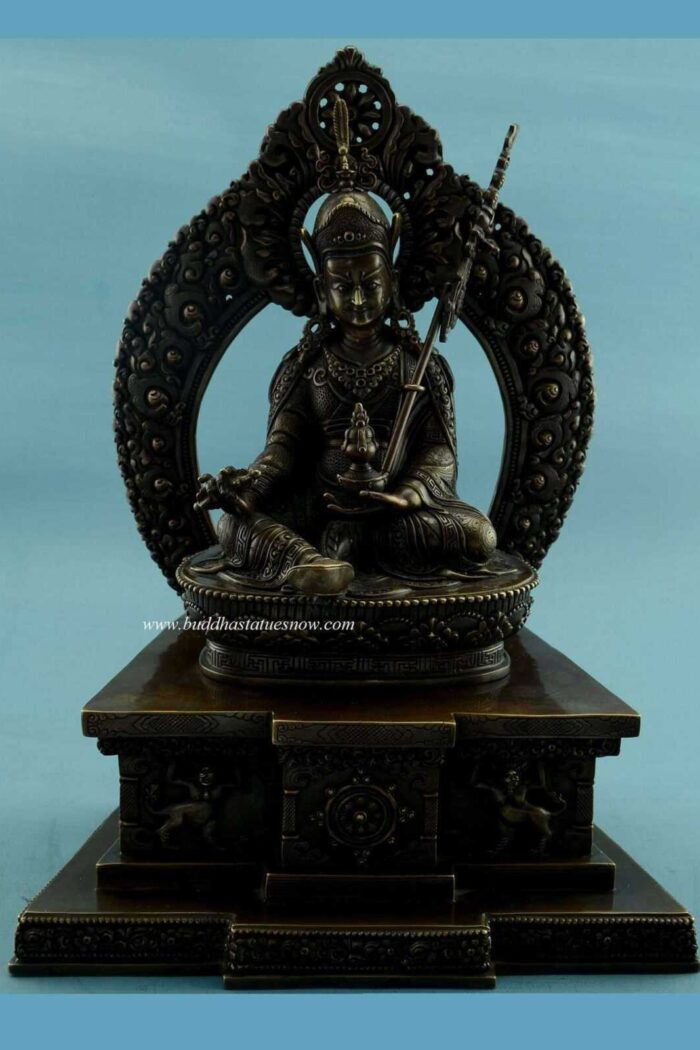Our Padmasambhava Rupa was hand crafted in Patan, Nepal using the traditional lost wax sculpting method. As a result, the statue displays the finest details of Padmasambhava. At the request of the buyer we can embed turquoise and red coral stones into the statue’s crown and jewels upon request. This is a complimentary service included at no extra cost, please be sure to notify us before shipping.
History of Padmasambhava
In Tibet, Padmasambhava represents the father of Tibetan Buddhism and his followers believe he is the second Buddha who revealed the sacred teachings to sentient life. The first Buddha in our kalpa was the self taught Shakyamuni Buddha who revealed the original Dharma.
Padmasambhava translates as “lotus born” in Pali. Additionally, the origins of Padmasambhava are mythical but they also have historical significance. The mystical location of his birth was called the “Land of the Dakinis”, also known as Oddiyana. Our statue depicts the founder of the first Tibetan Buddhist tradition known as – Nyingma.
Symbolism of the Padmasambhava Rupa
The statue is depicted holding the khatvanga which is leaning against his left shoulder. Additionally, the khatvanga symbolically depicts the impaled three heads representing the 3 worlds (Trailokya). These 3 realms are desire, form and formlessness. As a result, this Padmasambhava Rupa symbolically represents his total liberation from the Trailokya.
Padmasambhava Rupa is depicted holding the vajra in his right hand which is resting on his right knee. The word vajra means diamond or thunderbolt in Sanskrit. Indeed, this is the same symbol that the generals carried into battle in ancient India. Although spiritually it symbolizes the indestructibility of the diamond and the unstoppable force of the thunderbolt. It is also the preferred weapon of the Vedic God Indra. As a result, the vajra has become associated with spiritual perseverance and indestructibility.


